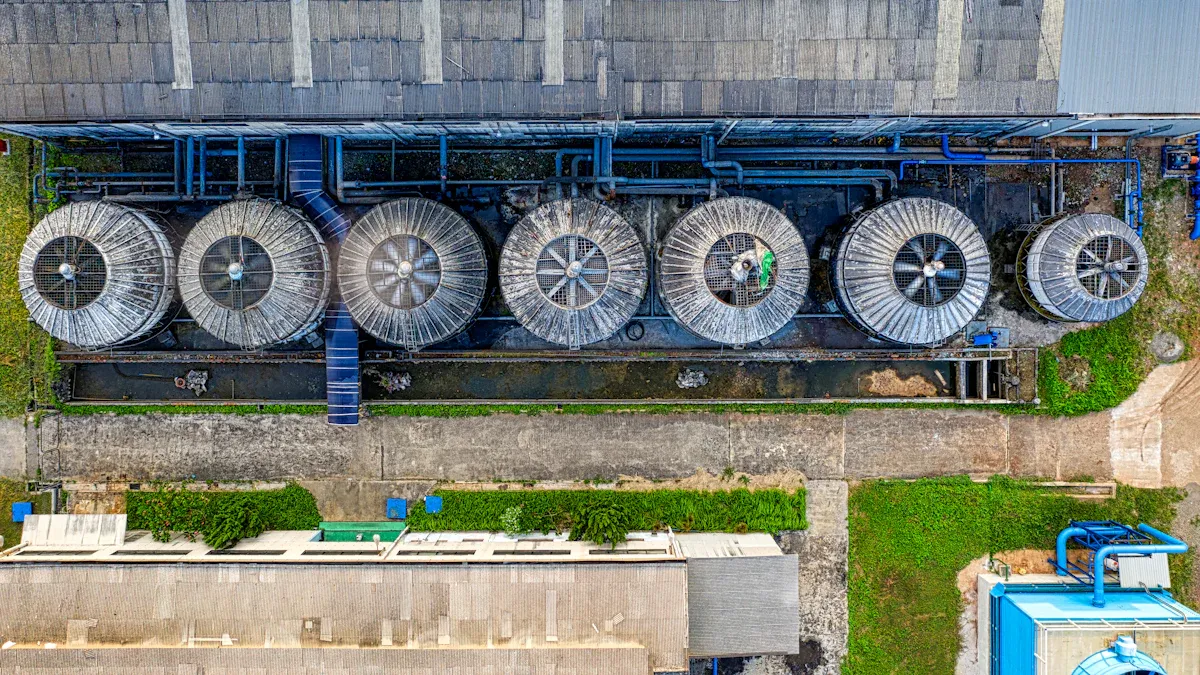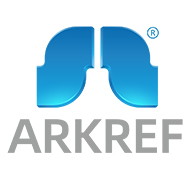The Working Principle of Shell and Tube Heat Exchangers

A shell and tube heat exchanger moves heat between two liquids. It is used in places where controlling temperature is very important. Its strong design helps it work well under high pressure. This tough build makes it good for hard jobs in factories and businesses. It can be used for many tasks, like heating or cooling. Because of this, it is a key tool for managing energy and processes.
Key Takeaways
Shell and tube heat exchangers move heat between two liquids. The liquids do not mix. This design helps control temperature in many industries.
Cleaning the tubes regularly keeps them working well for a long time. Strong materials, like stainless steel, make them last longer.
There are different types, like U-tube and floating head. Each type works best for certain temperatures and pressures.
Flow setups, like counter-current flow, help transfer heat better. Picking the right flow saves a lot of energy.
These heat exchangers are useful in oil, gas, chemical plants, and HVAC systems. They are important for managing heat effectively.
What Is a Shell and Tube Heat Exchanger?
Definition and Purpose
A shell and tube heat exchanger moves heat between two liquids. These liquids do not mix during the process. One liquid flows inside small tubes, while the other moves around these tubes in a larger shell. This setup helps transfer heat effectively while keeping the liquids apart. These devices are used in industries like chemical plants, oil refineries, and power stations where controlling temperature is very important.
These systems are very common and make up most of the heat exchanger market. They are simple to use and have worked well for a long time. They can handle both high temperatures and pressures, making them great for tough industrial jobs.
Key Components: Shell, Tubes, and Tube Bundle
A shell and tube heat exchanger has three main parts:
Shell: This is the outer part that holds the liquid flowing around the tubes. It keeps the liquids separate and supports the structure.
Tubes: These are small pipes where one liquid flows. The material of the tubes depends on the liquids and working conditions.
Tube Bundle: This is a group of tubes held together by plates or baffles. The bundle can be removed for cleaning, which helps the exchanger last longer.
Each part is important for moving heat. The shell and tubes work together to create more surface area for heat transfer. The tube bundle helps the liquids flow smoothly.
Types of Shell and Tube Heat Exchangers
There are different types of shell and tube heat exchangers, each for specific uses:
Fixed Tube Sheet Exchanger: The tubes are attached to the shell. This type is good for jobs with little temperature change.
U-Tube Exchanger: The tubes are bent into a U-shape. This design allows for temperature changes and easy cleaning. It is used in industries with big temperature differences.
Floating Head Exchanger: This type has a movable tube sheet. It handles temperature changes and is easy to maintain. It is used for high-pressure liquids.
Each type has its own benefits. You can pick the one that fits your needs. Whether you need a small design or one for tough conditions, there is a shell and tube heat exchanger for you.
How Does a Shell and Tube Heat Exchanger Work?

Heat Transfer Process
A shell and tube heat exchanger moves heat between two fluids. One fluid flows inside the tubes, while the other surrounds them in the shell. Heat moves from the hotter fluid to the cooler one. This continues until both fluids reach a similar temperature.
The tubes give a large area for heat to move. This setup keeps the fluids separate while transferring heat well. For example, in cooling, hot fluid in the tubes loses heat to cooler fluid in the shell. This helps keep the right temperature for factories or businesses.
Flow Configurations: Co-current, Counter-current, and Crossflow
The way fluids flow affects how well heat is transferred. There are three main flow types:
Co-current Flow: Both fluids move in the same direction. It is simple but less efficient because the temperature difference gets smaller as they flow.
Counter-current Flow: Fluids move in opposite directions. This setup transfers heat better because the temperature difference stays higher. It is the best choice for many uses.
Crossflow: One fluid moves across the other at a right angle. This type works well in small spaces or special designs.
Each flow type has its own benefits. For example, counter-current flow saves energy, while crossflow fits compact systems.
Impact of Materials and Fluid Properties
The materials and fluids used affect how well the exchanger works. Strong materials like stainless steel resist rust and last longer. Copper is often used because it transfers heat very well.
Fluid properties like thickness, weight, and heat transfer ability also matter. Fluids that transfer heat better improve the process. Special fluids, like nanofluids, can make heat transfer even faster.
Study Title | Focus Area |
|---|---|
Thermal and solutal convective flow of propylene glycol-based tetra-hybrid nanofluid with elastic deformation and Stefan blowing impacts: application to thermal energy | Looks at how nanofluids improve heat transfer. |
Experimental investigation of the effects of simultaneously using plate fins and a helical screw rod with a core rod on a double-tube heat exchanger’s thermal performance | Studies how shapes affect heat exchangers. |
Optimization of geometrical and operational parameters for fluid flow and heat transfer in microchannel heat sinks using the Taguchi method | Focuses on improving heat transfer by adjusting designs. |
Enhancing the synergistic properties of plate heat exchangers using nanohybrid MWCNTs–SiO2 EG-based nanofluids | Examines how nanofluids improve heat exchanger performance. |
A comparative analysis: heat transfer in thermally stratified MHD Carreau ternary (Cu-Al2O3-TiO2) hybrid nanofluid flow across an inclined vertical cylinder in presence of radiation | Studies hybrid nanofluids and their heat transfer abilities. |
Choosing the right materials and fluids makes the exchanger work better and last longer. For example, nanofluids can boost heat transfer, making the system more effective.
Design and Build of Shell and Tube Heat Exchangers
Shell Design and Tube Layout
The shell and tube layout affect how well the exchanger works. The shell is the outer part that holds the fluid around the tubes. Engineers design the shell to transfer heat better and stay strong under pressure.
The way tubes are arranged inside the shell also matters. Tubes can be in straight rows or staggered patterns. Staggered tubes improve heat transfer by making the fluid move more. Engineers use special tools like HTRI software and ASME codes to design better exchangers. These tools help check performance and ensure safety. Careful planning and material choice make exchangers work well and last long.
Importance of Baffles and Tube Passes
Baffles are important parts inside the shell. They guide the fluid to flow over the tubes instead of going straight. This helps the fluid touch the tubes more, improving heat transfer. Baffles also hold the tubes steady to stop damage.
Tube passes show how many times the fluid moves through the tubes. A single-pass design lets the fluid go through once. Multi-pass designs make the fluid move back and forth many times. Multi-pass systems transfer heat better by giving fluids more time to interact. You can pick the right baffles and passes based on your needs.
Maintenance and Long-Lasting Features
Regular cleaning keeps the exchanger working well for a long time. The tube bundle can be removed, making cleaning and checking easier. Cleaning clears deposits that block heat transfer. Materials like stainless steel and copper resist rust, making the exchanger last longer.
Other features like coatings and strong welding add durability. These help the exchanger handle high heat and pressure. By cleaning often and using strong materials, your exchanger will work well for years.
Applications of Shell and Tube Heat Exchangers
Industrial Uses: Oil, Gas, and Chemicals
Shell and tube heat exchangers are important in oil, gas, and chemical industries. They are used to cool hot liquids, heat cold ones, or turn vapors into liquids. In oil refineries, they cool crude oil after it is processed. This cooling helps prepare the oil for the next refining steps.
In chemical plants, these exchangers control heat during reactions. They remove extra heat or add heat when needed. Their strong design makes them perfect for high-pressure and high-temperature jobs.
Use in Building Systems and Power Plants
In HVAC systems, these exchangers control water temperatures for heating or cooling buildings. They save energy by moving heat between water and air. This keeps buildings comfortable and reduces wasted energy.
Power plants also depend on these exchangers for energy control. They cool steam from turbines, turning it back into water for reuse. This process helps turbines work better and saves water. The table below shows how these exchangers improve HVAC and power plant systems:
Evidence Type | Description |
|---|---|
Efficiency Boost | These exchangers keep condenser temperatures low, improving turbine performance. |
Working Process | Steam from turbines is cooled and turned into water, increasing system efficiency. |
Vacuum Support | Low condenser temperatures allow vacuum operation, stopping air leaks and improving performance. |
Advantages: Effective, Flexible, and Durable
Shell and tube heat exchangers have many advantages. They transfer heat well, even in tough conditions. You can adjust their size to fit small or large systems.
These exchangers are also very strong and reliable. They handle extreme conditions without breaking often. With good care, they can last for many years. Whether for factories or buildings, these exchangers provide steady and effective heat transfer solutions.
A shell and tube heat exchanger moves heat between two fluids. The fluids stay separate and do not mix. Its smart design helps transfer heat well. This makes it very useful for controlling temperatures in factories and businesses.
These heat exchangers save energy and improve how systems work. They can handle high heat and pressure, making them great for tough jobs.
You can find these devices in oil, gas, chemical plants, HVAC systems, and power plants. They are strong, flexible, and can be made bigger or smaller. This is why they are used worldwide for heat transfer needs.
FAQ
1. What does a shell and tube heat exchanger do?
It moves heat between two fluids without mixing them. You can use it to cool or heat liquids in factories, building systems, or power plants.
2. How do you pick the right shell and tube heat exchanger?
Think about temperature changes, pressure, and how easy it is to clean. U-tube designs are good for big temperature changes. Fixed tube sheets work better for steady conditions.
3. How often should a shell and tube heat exchanger be cleaned?
Clean it often to remove buildup that blocks heat transfer. How often depends on the fluids and how it’s used. Regular cleaning keeps it working well and lasting longer.
4. Can shell and tube heat exchangers handle tough conditions?
Yes, they can handle high heat and pressure. Their strong design and materials, like stainless steel or copper, make them great for hard industrial jobs.
5. Why use nanofluids in heat exchangers?
Nanofluids help heat move faster by improving thermal properties. They save energy, speed up heat transfer, and make systems work better.
See Also
A Comprehensive Guide To Water Chiller Unit Functionality
An Overview Of Air Cooled Condensing Unit Mechanics
Key Benefits Of Using Transcritical CO2 Refrigeration Units
Insights Into ARKREF CO₂ Transcritical Refrigeration Technology
Exploring The Advantages Of CO₂ Transcritical Refrigeration Systems

